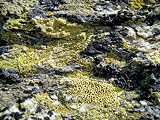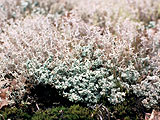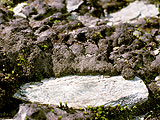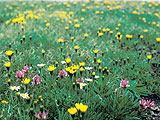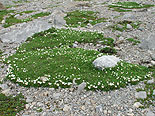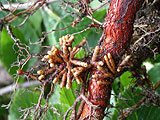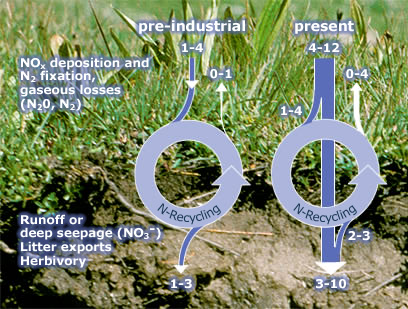 |
|
|
|
|
|
|
1 - At high elevation, large amounts of N are stored in snow and ice and are released during short periods in spring and early summer. |
|
|
||
|
2 - Lichen crusts on rock with cyanobacteria lichens |
3 - N-fixing Stereocaulon sp. (foreground, blue-green) and non-N-fixing Cladina sp. (background, white) |
4 - Massive cryptogram crusts including free cyanobacteria on loose substrate |
|
5 - Symbiotic N-fixation in Fabaceae (Trifolium alpinum, purple flowers) |
6 - Symbiotic N-fixation in Dryas octopetala |
7 - Symbiotic N-fixation in Alnus viridis |
|
8 - Microbial N-recycling |
|
|
Because alpine soils are cold, and because the season can be very short, microbial processes run slowly, and alpine soils are considered nutrient poor. By agricultural standards they are. However, as will be shown, this does not reflect the reality for alpine plants, which are adapted to these life conditions. Note: Most of the extra-anthropogenic N deposits pass through the system or get trapped in recalcitrant forms in soil humus. Yet, by passing through the system these easily available forms of N may change species composition and biodiversity. |
29 August 2011 |
||
| |
||

